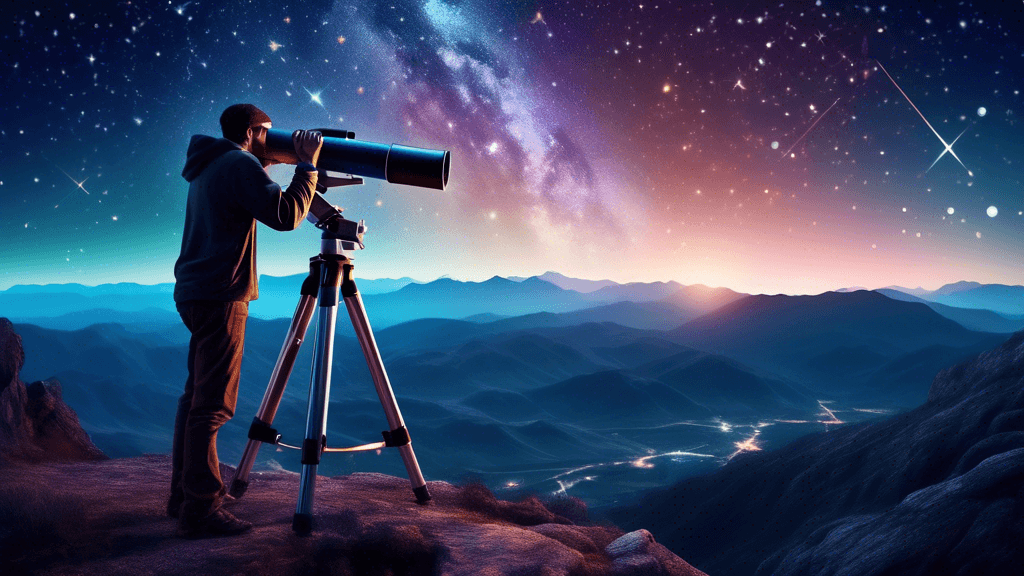
Mastering the Mysteries: Advanced Astrophotography Techniques
Share
Introduction to Advanced Astrophotography Techniques
Are you ready to take your astrophotography to the otherworldly heights of excellence? Whether you're an amateur star-gazer with a passion for the night sky, or a seasoned photographer looking to hone your skills, advanced astrophotography techniques can enhance your captures, revealing not just stars, but stories in the cosmos. This blog delves deep into sophisticated methods that bring out the celestial wonders in profound clarity and detail.
Understanding the Tools and Technologies
Before diving into techniques, it’s pivotal to clarify the tools that can elevate your astrophotography. High-quality equipment is a foundational requirement for outstanding results:
- Telescopes with Tracking Abilities: A telescope equipped with an accurate tracking system compensates for Earth’s rotation, allowing for long exposures without star trails.
- Specialized Astrophotography Cameras: These cameras, including CCDs (Charge-Coupled Devices) and the newer CMOS sensors, are designed to capture the faint light of distant celestial bodies with minimal noise.
- High-Quality Lenses: Lenses with wide apertures and low dispersion glass can significantly improve the quality of your images.
- Advanced Software: Software for image processing like DeepSkyStacker and PixInsight can greatly enhance the final image by stacking and processing multiple exposures.
Technique 1: Stacking for Depth and Detail
One of the critical techniques in advanced astrophotography is 'stacking'. What is stacking, and why is it important? Stacking involves taking multiple exposures of the same scene and combining them to reduce noise and increase detail. This is especially useful in astrophotography where light is often scarce.
According to John Smith, a professional astrophotographer, Stacking not only improves the signal-to-noise ratio but also helps in bringing out the subtle details and colors of nebulas and galaxies that single exposures generally fail to capture.
Technique 2: Long Exposure and Light Pollution Reduction
Long exposures are essential in astrophotography; they allow more light to enter the camera, revealing the faint celestial objects. However, they also introduce challenges, such as light pollution and noise. Using light pollution filters and shooting from darker sites can mitigate these issues, ensuring that the photos capture the true beauty of the night sky. Additionally, using lower ISO settings can help reduce noise, preserving the quality of the stars and constellations in your photos.
Technique 3: High Dynamic Range (HDR) Imaging
For capturing details in high contrast areas, such as the bright core of the Milky Way juxtaposed against its fainter outer regions, HDR imaging becomes invaluable. This technique involves capturing multiple shots of the same scene at different exposures and blending them to create a single image that encompasses a larger range of luminance levels.
Processing and Editing for Perfection
The power of processing in astrophotography cannot be overstated. Mastering software tools can dramatically enhance the clarity, detail, and aesthetic appeal of your night sky images:
- Image Stacking Software: Tools like AutoStakkert and Sequence Generator Pro automate the stacking process, combining your images with precision.
- Post-Processing Software: Understanding the functionalities of programs like Adobe Photoshop, Lightroom, or the more specialized StarTools can make a significant difference in image output. Techniques like noise reduction, sharpening, and color saturation adjustments can turn a good picture into a great one.
Enhancing the Viewer's Experience
Part of the joy in astrophotography lies in sharing your captures. Presenting them in ways that resonate with viewers can vastly improve their experience. Creating time-lapses from your night sky shots or crafting stories around the constellations can engage and educate your audience, enhancing both the aesthetic and emotional impact of your work.
To conclude, mastering advanced astrophotography techniques is not just about the right gear and the correct settings; it's about patience, persistence, and continuous learning. Every night sky offers a unique canvas for you to etch your vision, using stars as your guidepoints. What celestial spectacle will you unravel next with your camera?
Call to Action
Ready to embark on a journey through the cosmos with your camera? Start experimenting with these advanced techniques and share your stellar masterpieces with the world. Do you have a favorite astrophotography tip or trick? Share it in the comments below and let's discuss the infinite possibilities of night sky photography!





